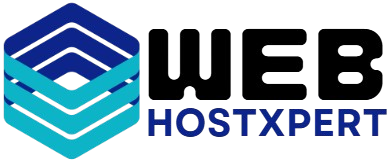Managing a website can be tough. Many face challenges keeping their sites running smoothly.
Website management involves many tasks. From updating content to ensuring security, the work never ends. Problems like slow loading times, broken links, and outdated information can frustrate visitors. Handling these issues requires time, skills, and patience. For businesses, a poorly managed site can hurt reputation and sales.
Small business owners, bloggers, and even seasoned webmasters can find website management daunting. Understanding the common difficulties can help you prepare better. This blog will explore the main challenges in website management and offer tips to tackle them. Stay tuned to learn more about maintaining a user-friendly, efficient website.
Introduction To Website Management Challenges
Managing a website can be tricky. Many challenges arise, making it a daunting task. Website owners often feel overwhelmed by the different issues they face. This section aims to highlight some common difficulties and the importance of effective website management.
Common Issues Faced
Website management brings several common issues. Some of these include:
- Security Threats: Websites face constant threats from hackers. Security breaches can lead to data loss or theft.
- Performance Problems: Slow loading times frustrate users. This can lead to higher bounce rates.
- Content Updates: Keeping content current is vital. Outdated information can harm your credibility.
- SEO Challenges: Optimizing content for search engines is complex. It requires continuous effort and monitoring.
- User Experience: Ensuring a seamless user experience is critical. Poor design or navigation can drive users away.
Importance Of Effective Management
Effective website management is crucial for several reasons:
- Enhanced Security: Regular updates and monitoring can protect your site from threats.
- Improved Performance: Optimized performance ensures a better user experience. This can lead to increased engagement.
- SEO Benefits: Proper management improves your search engine rankings. More visibility means more traffic.
- Content Relevance: Regular updates keep your content fresh. This helps maintain credibility and trust.
- User Satisfaction: A well-managed site enhances user satisfaction. Happy users are more likely to return.
In summary, understanding these challenges and the importance of effective management is key. It helps ensure your website runs smoothly and efficiently.
Technical Difficulties
Managing a website involves many technical challenges. These issues can disrupt your site’s performance and user experience. Below, we discuss two common technical difficulties: server downtime and website speed optimization.
Server Downtime
Server downtime is a significant issue. It means your website is temporarily unavailable. This can harm your site’s reputation and lead to lost revenue.
Some common causes of server downtime include:
- Hardware failures
- Software glitches
- Network issues
- Cyberattacks
Monitoring your server can help. Use tools to alert you when downtime occurs. Regular maintenance and updates are also crucial. They help prevent unexpected issues.
Website Speed Optimization
Website speed is vital for user experience. A slow website can frustrate users and increase bounce rates. Google also considers speed in its ranking algorithm.
Here are some ways to improve website speed:
- Optimize images: Compress images without losing quality.
- Minimize HTTP requests: Reduce the number of elements on your page.
- Use a Content Delivery Network (CDN): Distribute your content worldwide.
- Enable browser caching: Store files locally on users’ devices.
- Minimize CSS and JavaScript: Remove unnecessary code.
Tools like Google PageSpeed Insights can help. They provide a detailed analysis of your site’s speed and offer suggestions for improvement.
| Tool | Function |
|---|---|
| Pingdom | Monitors server uptime |
| GTmetrix | Analyzes website speed |
| Cloudflare | Provides CDN services |
Content Management Hurdles
Managing a website can be challenging. One of the biggest hurdles is content management. Keeping content fresh and organized is tough. It requires time and effort. Let’s explore some common challenges faced in content management.
Maintaining Fresh Content
Consistently updating your website with new content is essential. Fresh content keeps visitors engaged. It also helps with SEO. But finding new ideas can be difficult. Plus, writing quality content takes time. It’s not just about writing; it’s about writing well. Regular updates require a dedicated schedule. This can be hard to maintain, especially for small teams.
Content Organization
Organizing content is another big challenge. It’s more than just putting text on a page. Good organization helps users find information quickly. It also improves the website’s usability. But poor organization can confuse visitors. This can lead to higher bounce rates. Proper categorization and tagging are essential. They make content easy to find. Consistent structure is key. It ensures a smooth user experience.

Credit: www.kartcom.com
User Experience Challenges
User experience is vital for website success. Poor user experience can drive visitors away. They may never return. Managing a website is difficult. Users expect seamless navigation. They want content to be easy to find. A responsive design is essential. Many users browse on mobile devices. Let’s explore these challenges.
Navigation Issues
Users need to find information quickly. Complex menus confuse them. Use simple, clear labels. Ensure important pages are easy to access. Test your site’s navigation. Ask real users to give feedback. Adjust based on their experience. This improves user satisfaction.
Responsive Design
Mobile browsing is common. Your site must work on all devices. A responsive design adapts to different screens. Test your site on various devices. Ensure text is readable. Buttons should be easy to click. Images must adjust without breaking the layout. This keeps users engaged.
Security Concerns
Managing a website involves numerous challenges, with security concerns being paramount. Ensuring the safety of user data and protecting against cyber threats is crucial. Let’s delve into the key aspects of website security.
Protecting Data
Protecting data should be a top priority for any website owner. Sensitive information like customer details and payment information must be secure. Using encryption techniques helps safeguard data during transmission.
Regularly updating your software and plugins minimizes vulnerabilities. Strong passwords and multi-factor authentication provide additional layers of security. Data breaches can damage your reputation and lead to financial loss.
Preventing Cyber Attacks
Cyber attacks are a significant threat to website security. Hackers use various methods to exploit weaknesses. Regular security audits help identify and fix potential loopholes.
Installing firewalls and anti-malware software can block unauthorized access. Educating your team about phishing and social engineering attacks is important. Being proactive can help prevent costly security breaches.
Seo Management
SEO Management is a critical part of maintaining a successful website. It helps improve visibility on search engines, driving more traffic to your site. Effective SEO management involves several key components, including keyword optimization and monitoring search rankings.
Keyword Optimization
Keyword optimization is essential for improving search engine rankings. It involves researching and using the right keywords in your content. Here’s how you can optimize keywords effectively:
- Identify primary and secondary keywords.
- Use keywords naturally in titles, headings, and content.
- Incorporate keywords in meta descriptions and alt text for images.
Avoid keyword stuffing. It can harm your search rankings. Instead, focus on creating valuable content that includes keywords in a natural way.
Monitoring Search Rankings
Regularly monitoring search rankings is crucial. It helps you understand how well your website is performing. Here are steps to monitor search rankings:
- Use tools like Google Analytics and Google Search Console.
- Track the rankings of your main keywords.
- Analyze the performance and adjust your strategy as needed.
Monitoring search rankings helps identify areas for improvement. It ensures that your SEO efforts are effective and up-to-date.
| Tool | Purpose |
|---|---|
| Google Analytics | Track website traffic and user behavior |
| Google Search Console | Monitor search performance and site issues |
By focusing on these areas, you can improve your website’s visibility. It leads to more traffic and better user engagement.
Performance Tracking
Performance tracking is crucial for effective website management. It helps you understand how your site is performing. You can track visitor behavior, page load times, and more. This information is essential for making informed decisions.
Analytics Tools
Analytics tools collect data about your website. Google Analytics is a popular choice. It provides insights into visitor behavior, traffic sources, and user demographics. Other options include Adobe Analytics and Piwik. These tools offer advanced features for detailed analysis.
Evaluating Metrics
Evaluating metrics involves looking at key performance indicators (KPIs). Common KPIs include bounce rate, average session duration, and page views. A high bounce rate may indicate that users leave your site quickly. Average session duration shows how long visitors stay on your site. Page views tell you which content is most popular.
Tracking these metrics helps you understand user behavior. You can identify areas that need improvement. You can also see which strategies are working well. Regular evaluation ensures your website meets its goals.

Credit: offers.hubspot.com
Solutions And Best Practices
Managing a website can be challenging. From ensuring smooth functionality to keeping content fresh, the tasks can be overwhelming. Fortunately, there are several solutions and best practices to streamline website management. By leveraging the right tools and strategies, you can maintain a successful website with ease.
Utilizing Cms Platforms
Content Management Systems (CMS) simplify website management. They provide user-friendly interfaces. This allows even those with limited technical skills to manage content. Popular CMS platforms include WordPress, Joomla, and Drupal. These platforms offer various plugins and themes. This helps customize your website to meet specific needs.
Regular Updates And Maintenance
Regular updates are essential for website security and performance. Updating your CMS, plugins, and themes ensures your site runs smoothly. Schedule routine maintenance checks. This helps identify and fix potential issues before they escalate. Regular backups are also crucial. They protect your data from loss or corruption.

Credit: www.instagram.com
Frequently Asked Questions
What Are Common Website Management Challenges?
Common challenges include maintaining website speed, ensuring security, managing content updates, and dealing with technical issues.
How Can I Improve Website Security?
Improve website security by using strong passwords, updating software regularly, and installing security plugins.
Why Is Website Speed Important?
Website speed is crucial for user experience and SEO, as slow loading times can drive visitors away.
How Often Should I Update Website Content?
Update your website content regularly to keep it fresh and relevant, ideally every few weeks.
Conclusion
Managing a website can be challenging. It requires time and effort. Regular updates are essential. Keep learning and adapting to new trends. Use helpful tools to simplify tasks. Seek professional help when needed. Stay patient and persistent. Your hard work will pay off.
Remember, successful website management is a journey. Stay focused and keep improving. Your website will thrive with dedication.




